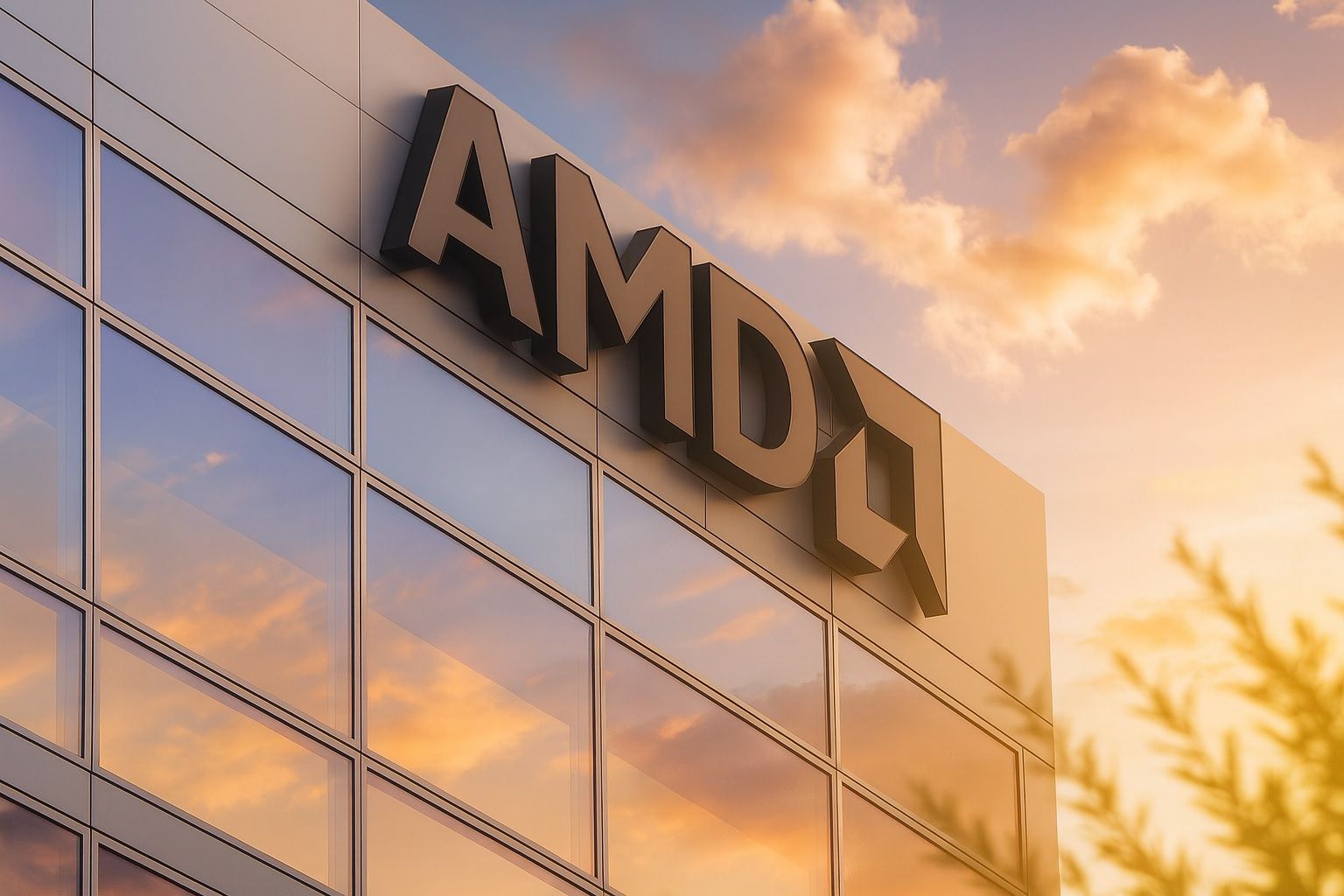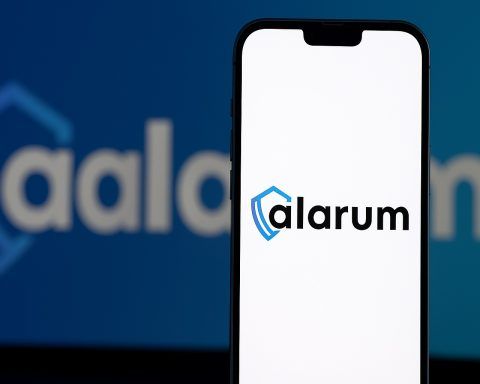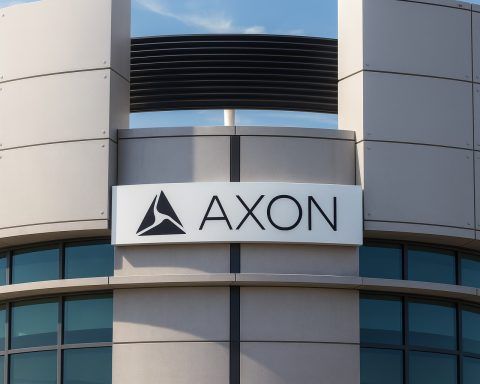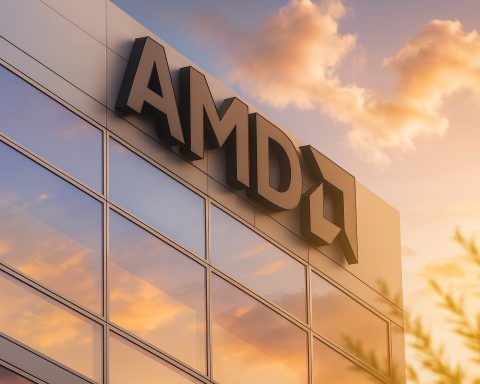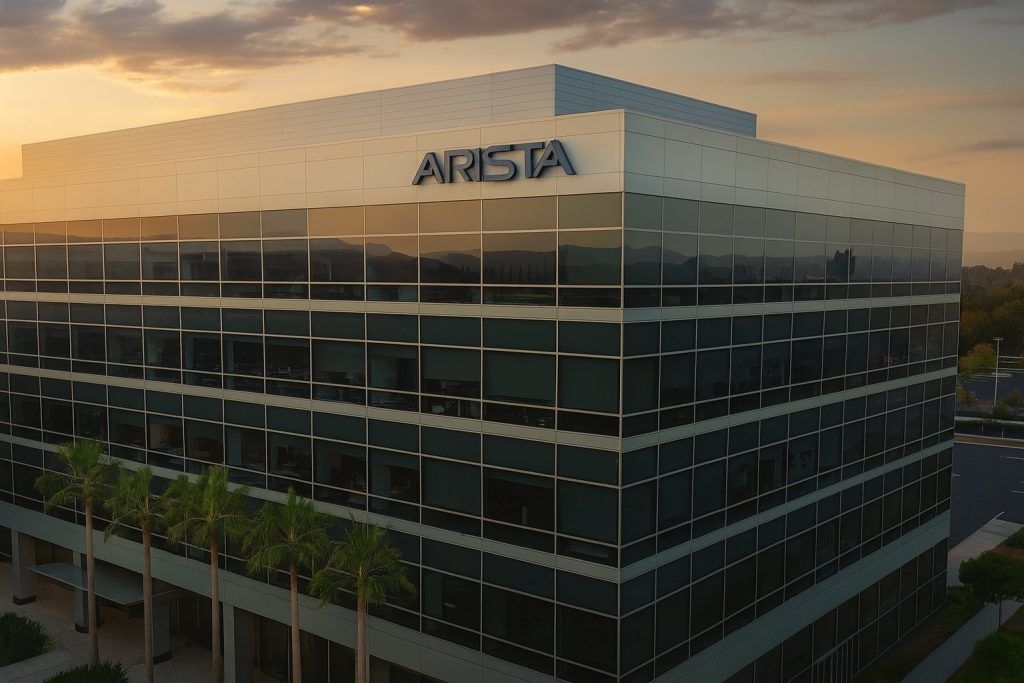- Blowout results: Q3 revenue of $9.246 billion (a 36% year-on-year jump) with GAAP EPS $0.75 and non‑GAAP EPS $1.20 [1], both well above last year’s levels.
- Bullish guidance: Q4 revenue expected around $9.6 billion (±$0.3B), implying ~25% YoY growth and ~4% sequential increase [2]. Non‑GAAP gross margin is forecast near 54.5%.
- Stock performance: Shares are near all-time highs (around $250) and up roughly 90–120% year-to-date [3], far outpacing peers. (AMD was up ~118.8% YTD by late Oct [4].) AMD’s stock closed about $250.48 on Nov 4 [5] (a ~3.7% drop that day), reflecting a modest pullback after the report.
- Analyst buzz: Wall Street is very bullish. UBS’s Timothy Arcuri maintains a Buy rating ($265 PT) and sees AMD beating guidance [6]. Bank of America’s Vivek Arya raised his target to $300 on new AI deals [7]. Overall analyst sentiment is strongly positive (majority Buy) with consensus targets around $250–$260.
- AI-driven momentum: AMD’s quarter was fueled by datacenter and AI growth. Notably, AMD inked a 6 gigawatt GPU deal with OpenAI [8] (first 1GW deploying in H2 2026) and Oracle plans an AI supercluster of 50,000 AMD GPUs by Q3 2026 [9]. These deals “create significant … shareholder value” – per AMD’s CFO Jean Hu [10] – and cement AMD as a key AI hardware supplier.
- Competitive context: Intel’s Q3 sales were ~$13.7B (+3% YoY) [11] and Nvidia’s were $35.1B (+94% YoY) [12]. In 2025 YTD, AMD’s stock (+~100%+) has outpaced Nvidia (+54%) [13] and roughly matched Intel. AMD is gaining CPU market share from Intel, though Nvidia still leads in AI chips.
- Tech & partnerships: AMD rolled out new products and partnerships. At an industry summit, AMD unveiled “Helios,” a rack-scale AI reference design (Instinct GPUs + EPYC CPUs + Pensando networking) based on open Open Rack standards [14] [15]. It also announced major supercomputer projects with the U.S. DOE (the Lux and Discovery systems at Oak Ridge, debuting 2026) to advance national AI/HPC capabilities [16] [17]. In cloud, AWS launched a new EPYC-based EC2 M8a instance (5th Gen CPUs) [18] and Oracle updated its on-prem cloud with EPYC X11 platforms [19]. AMD also completed selling its ZT Systems manufacturing unit to Sanmina, focusing instead on designing full AI rack solutions [20].
- Forward outlook: Analysts expect AMD’s growth to continue. Consensus 2025 revenue estimates are roughly $33B (up ~30% from 2024), with 2026 around $40B [21] [22]. Management’s strong Q4 guide and large AI deals underpin a multi-year uptrend. As CEO Lisa Su put it, “our strong outlook for 2025 reflects robust demand and continued momentum” (paraphrasing PR) [23]. Wall Street is watching this AI-fueled ramp with enthusiasm.
Record Q3 Results and Financials
AMD’s Q3 2025 report (released Nov 4) shattered records. The company posted $9.246 billion in revenue, up 36% from a year ago [24]. GAAP earnings were $1.243 billion (EPS $0.75), and non-GAAP earnings $1.965 billion (EPS $1.20) [25]. This beat analysts’ expectations (roughly $8.7–8.8 B revenue, $1.17 EPS consensus) by a comfortable margin.
The growth was led by AMD’s Data Center and Client segments. CEO Lisa Su highlighted “record revenue and profitability” driven by strong sales of EPYC server CPUs and Instinct GPUs [26]. CFO Jean Hu added that Q3 also generated record free cash flow [27]. AMD’s gross margin expanded to 52% GAAP (54% non-GAAP) on higher-priced products and cost leverage [28].
Looking ahead, AMD issued very strong guidance. For Q4 2025 it forecast ~$9.6 B revenue (±$300M), implying roughly 25% YoY growth [29]. Non-GAAP gross margin is expected near 54.5%. Notably, guidance excluded any potential revenue from MI308 GPU shipments to China [30], an effect of U.S. export controls. The midpoint guide still implies sequential growth (~4%) and underscores management’s confidence.
Analyst Commentary and Market Reaction
Wall Street has reacted enthusiastically to AMD’s results. In the immediate trading session after the report, AMD stock moved modestly (close was ~$250, down about 3.7% that day [31]), reflecting some profit-taking. However, the broader reaction has been positive, with analysts reiterating Buy ratings. UBS’s Timothy Arcuri – a top semiconductor analyst – noted an “upside bias” for Q3 and maintained a Buy rating ($265 price target) [32]. Bank of America’s Vivek Arya similarly called AMD a Buy and lifted his target to $300 [33]. Arya cited AMD’s growing visibility in AI (OCP announcements) and projected AMD capturing a large share of OpenAI’s 6 GW GPU deal (worth ~$11B in 2027, potentially leading to EPS ~$10–$11 by 2027) [34].
Most analysts expect AMD’s strong growth to persist. Zacks notes AMD has beaten consensus in every quarter this year, averaging a +2% surprise (improving street estimates) [35]. According to TipRanks, AMD’s consensus rating is a “moderate buy” (29 Buys vs 10 Holds) [36], with an average price target around ~$250. The company’s robust Q4 guidance – 2025 revenue growth ~25% – suggests AMD could reach ~$33B for the full year, up ~28% from 2024. With double-digit operating leverage, analysts forecast continued profit growth. In sum, the analyst community views AMD’s results as validating its AI/datacenter strategy, even as cautioning that expectations are high.
Stock Performance and Comparison with Peers
AMD shares have dramatically outperformed the market in 2025. As of early November, the stock is roughly two to three times higher than its late-2024 lows. Zacks reported a +118.8% YTD gain for AMD [37], far outpacing the broader semiconductor sector (~90% for Intel, ~54% for Nvidia) [38]. (TipRanks and other sources similarly note >90% gains YTD [39].) The rally reflects excitement over AMD’s AI deals and improving business.
By comparison, AMD’s competitors also posted strong results but on different scales. Nvidia (NVDA) reported record Q3 (ended Oct) revenue of $35.1B (up 94% YoY) [40], driven almost entirely by its AI/datacenter products. Nvidia’s data center sales alone were $30.8B (up 112% YoY) [41]. AMD’s Q3 revenue ($9.246B) is much smaller, but grew at a healthy 36%. Intel’s Q3 revenue was ~$13.7B (+3% YoY) [42], with GAAP EPS $0.90 [43]. Intel’s sales base and growth rate lag AMD’s, reflecting AMD’s share gains in CPUs.
In stock terms, while AMD has doubled, Intel has also rallied (~+106% YTD [44]) on new investment and AI optimism, and Nvidia is up (~+54%). After AMD’s Q3 report, its stock consolidated near $250 (roughly flat-year vs the share price days before earnings). The fact that shares did not skyrocket on the news suggests expectations were extremely high. Still, the long-term trend remains positive as investors focus on AMD’s 2026 pipeline and AI opportunities.
Recent Developments and AI Momentum
Beyond the quarter, AMD has been in the headlines for big AI and infrastructure moves. Most notable is AMD’s partnership with OpenAI (announced Oct 6): a multi-year deal to deploy 6 GW of AMD GPUs for OpenAI’s next-gen AI systems [45]. Under this agreement, the first 1 GW of AMD Instinct MI450 GPUs will be delivered in late 2026 [46], with the rest ramping thereafter. Lisa Su said this deal “brings the best of AMD and OpenAI together to create a true win-win” [47]. CFO Jean Hu emphasized it should drive “tens of billions of dollars in revenue” for AMD and be highly accretive to EPS [48].
Shortly after, AMD announced two DOE supercomputers in partnership with Oak Ridge National Lab: the Lux AI and Discovery systems [49]. These exascale-class machines, deploying new AMD Instinct GPUs and EPYC CPUs, will focus on scientific AI applications. Lux (deployed in early 2026) is the first dedicated US “AI factory” supercomputer [50], and Discovery (also 2026) will use new “Venice” EPYC CPUs and MI430X GPUs engineered for sovereign AI use [51]. These flagship projects highlight AMD’s push into high-performance computing and are expected to help U.S. government R&D.
At the OCP Global Summit (Oct 14), AMD unveiled “Helios,” a rack-scale AI reference platform built on Meta’s new Open Rack Wide standard [52]. Helios integrates AMD Instinct GPUs, EPYC CPUs, and Pensando networking into an open, double-wide rack design. Data Center GM Forrest Norrod said Helios is “turning open standards into real, deployable systems” and will power next-gen AI datacenters [53]. This underscores AMD’s strategy to offer full hardware stacks (silicon to systems) to cloud providers. In fact, AMD recently sold its ZT Systems infrastructure unit to Sanmina [54], choosing to partner on manufacturing while keeping ZT’s design talent in-house. As Norrod explained, AMD is extending its leadership “from silicon to software to full systems,” enabling faster deployment of AMD-based AI solutions [55].
On the product front, AMD is refreshing its CPUs and GPUs: 5th-gen EPYC (Genoa II) processors and new Instinct accelerators (MI350 series) were showcased this year. Cloud partners have begun rolling out EPYC: AWS just launched the EC2 M8a instance on 5th Gen EPYC (up to 30% faster) [56], and Oracle updated its on-prem Cloud@Customer and Private Cloud hardware with Genoa-II CPUs [57]. In PCs, AMD’s new Ryzen Threadripper 9000WX chips were announced [58]. AMD also rolled out FidelityFX Super Resolution 4 upscaling tech, doubling the number of supported games [59].
In the macro backdrop, the global AI “arms race” continues to heat up. Demand for AI chips and high-performance servers is surging, but some analysts warn of eventual saturation. For now, AMD is riding a wave of momentum: Its Q3 beat and $9.6B Q4 guide (25% growth) signal that the chipmaker is capitalizing on secular AI trends. As one analyst put it, AMD’s Q3 earnings are viewed as “a bellwether for the AI revolution” (financialcontent.com). Investors will also be watching broader industry indicators – e.g. competitor pricing and GPU availability – for hints on when growth might slow.
Looking Ahead: Forecasts and Challenges
Analysts’ forward estimates remain ambitious. For all of 2025, consensus revenue targets are around $33B (versus AMD’s preliminary guidance implying 23–25% annual growth). For 2026, some projections approach $40B. Meanwhile, Wall Street’s average price target near ~$250 suggests about 7–15% upside from today’s levels [60]. Key questions for the next quarters include: How fast will cloud datacenter spending continue? Will AI competition (e.g. Nvidia’s Blackwell GPUs) impact AMD’s market share? Can AMD maintain gross margins as it invests in new fabs? Management’s optimistic outlook – coupled with its pipeline of chips and deals – suggests they believe these challenges can be met.
In summary, AMD’s Q3 2025 results confirmed the company’s transformative growth path. Record revenue and profits, strong guidance, and landmark AI partnerships have reinforced investor enthusiasm [61] [62]. While the stock retraced slightly on earnings day, most strategists remain bullish that AMD will continue to capitalize on the booming AI and cloud markets. As CEO Lisa Su emphasized, AMD is “well positioned to deliver significant growth” ahead [63].
Sources: AMD Q3 2025 press release [64] [65]; analyst reports (UBS, BofA) and financial news [66] [67]; competitor earnings releases [68] [69]; AMD press releases on partnerships [70] [71] [72]; stock data [73] [74].
References
1. ir.amd.com, 2. ir.amd.com, 3. www.nasdaq.com, 4. www.nasdaq.com, 5. www.investing.com, 6. www.tipranks.com, 7. www.tipranks.com, 8. ir.amd.com, 9. www.alphaspread.com, 10. ir.amd.com, 11. www.intc.com, 12. nvidianews.nvidia.com, 13. www.nasdaq.com, 14. ir.amd.com, 15. ir.amd.com, 16. ir.amd.com, 17. ir.amd.com, 18. ir.amd.com, 19. ir.amd.com, 20. ir.amd.com, 21. ir.amd.com, 22. www.tipranks.com, 23. ir.amd.com, 24. ir.amd.com, 25. ir.amd.com, 26. ir.amd.com, 27. ir.amd.com, 28. ir.amd.com, 29. ir.amd.com, 30. ir.amd.com, 31. www.investing.com, 32. www.tipranks.com, 33. www.tipranks.com, 34. www.tipranks.com, 35. www.nasdaq.com, 36. www.tipranks.com, 37. www.nasdaq.com, 38. www.nasdaq.com, 39. www.tipranks.com, 40. nvidianews.nvidia.com, 41. nvidianews.nvidia.com, 42. www.intc.com, 43. www.intc.com, 44. www.nasdaq.com, 45. ir.amd.com, 46. ir.amd.com, 47. ir.amd.com, 48. ir.amd.com, 49. ir.amd.com, 50. ir.amd.com, 51. ir.amd.com, 52. ir.amd.com, 53. ir.amd.com, 54. ir.amd.com, 55. ir.amd.com, 56. ir.amd.com, 57. ir.amd.com, 58. ir.amd.com, 59. ir.amd.com, 60. www.tipranks.com, 61. ir.amd.com, 62. ir.amd.com, 63. ir.amd.com, 64. ir.amd.com, 65. ir.amd.com, 66. www.tipranks.com, 67. www.tipranks.com, 68. nvidianews.nvidia.com, 69. www.intc.com, 70. ir.amd.com, 71. ir.amd.com, 72. ir.amd.com, 73. www.nasdaq.com, 74. www.investing.com
